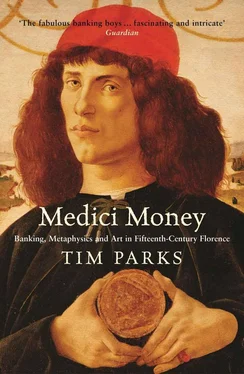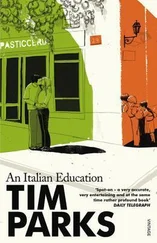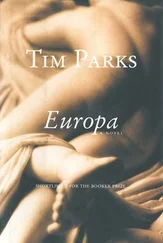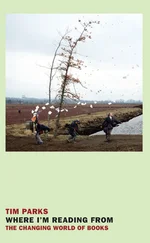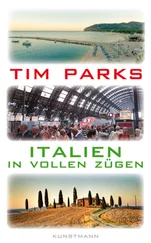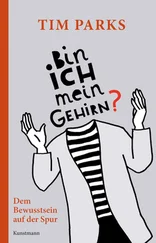In the early fifteenth century, the Florentine branch of the Medici bank became a major dealer in debt bonds, which by 1426 were trading at only 20 to 35 percent of face value. Clearly, the idea of the government’s ever paying the interest was now considered a very long shot. The days of the willing lender were over. The government did try to raise money through forced rather than freely granted loans. The trick here was that if you agreed not to collect the interest, the amount you were asked for was drastically reduced. But in the end, these makeshifts just weren’t enough. When people paid the full amount and wanted interest, the government couldn’t pay. When they took the cheaper option, the income wasn’t enough. And now there really is no more money to be squeezed out of the plebs. People are starving. The time has come to make the rich pay.
Two figures are presently manipulating the officially republican government: Rinaldo degli Albizzi, head of a rich landowning family, and the aging, highly respected Niccolò da Uzzano. Together they introduce the so-called catasto , or register. Every three years, every family in Florence will present a declaration listing all property, investments, and incomes. Certain deductions are allowed, certain complex calculations are made of the value of land worked by tenant farmers who pay rent in kind. For each declaration, a so-called sovrabbondanza —or excess of what is strictly necessary for staying alive — is established, and when the government needs money it taxes everybody 0.5 percent of that value. This wouldn’t be too much if it were only collected once a year, but it could be demanded twice, or even three times a year. In 1427, 10,171 families make declarations and 2,924 are immediately exempted from any payment at all because miserabili .
The poor are thrilled. Taxation in proportion to ability to pay! At last. The big landowners complain that just because they hold property does not mean that they have the florins ready to pay the taxes on it. Many landowners do indeed find themselves having to sell land to pay what’s asked of them. The merchants, on the other hand, are furious about having to declare liquid assets. Cash is here today, gone tomorrow, and easily hidden, they point out. All the law does is encourage evasion and the flight of capital — through the Medici bank, for example — while discouraging local investment. As soon as the law is enacted, almost all Florentine businessmen set about making false declarations. “For love of the taxman,” a silk merchant’s accountant writes ironically on the opening page of some rigged books. One Medici director invests sums in his own bank under three false names.
In the 1427 catasto , the first, Cosimo de’ Medici declares possession of two factories turning raw wool into cloth. Opened in 1402 and 1408, these businesses employ a great many more people than the bank ever will but never make really significant profits. They serve to give the Medici a more solid and visible role in society. Florence, after all, is primarily a cloth town. The factories produce things people can see and hold in their hands and wear. They employ poor people. In 1433 a silk factory will be added.
The family also declares ownership of a villa at Careggi, just outside the town to the north, and a fortified villa at Trebbio, some miles farther north in the low hills of the Mugello, where the family also owns a great deal of agricultural land and again employs many poor people. A possible private army perhaps. In fact, it’s time to stop thinking of the Medici, as just one family, or just a bank. Cosimo’s older cousin, Averardo di Francesco de’ Medici declares possession of Cafaggiolo, another fortified villa near Trebbio. The extended family controls important official appointments in the nearby towns of Scarperia, Borgo San Lorenzo, and Marradi. There are family chapels in the churches. Averardo also has a bank, albeit not as big as Cosimo’s. The Rome branch is losing money, his 1427 declaration claims. A likely story.
Averardo is in partnership with a Bardi who runs things for him in Rome. On taking over the main Medici bank in 1420, Cosimo moved Ilarione de’ Bardi up from Rome to Florence to be the bank’s new general director and brought in a distant Bardi cousin, Bartolomeo, to manage things in Rome. These men are paid-up partners. Bartolomeo’s brother, Ubertino, runs a bank in London that regularly serves as the Medici’s English agent.
Then there is the Portinari family. Again in 1420, Cosimo fired the head of the Florence branch and replaced him with Folco d’Adovardo di Portinari, brother of Giovanni d’Adovardo Portinari, who is running the Venice branch. These two men are great-grandsons of the brother of Dante’s Beatrice Portinari.
So now we have three powerful old Florentine families — the Medici, the Bardi, the Portinari — tightly knotted together in and through the bank. Or rather two banks. And actually it’s four families, if we count Cosimo’s brother Lorenzo’s marriage to a Cavalcanti. Lorenzo himself is also a director of the bank. This is more than a financial institution. It’s a political entity, a clan, a party even, in a city where to form a political party is treason. By law, there can be no declared divisions in this most divided of towns. No political campaigning. The government has recently banned the meetings of various religious confraternities. All that whipping and singing and praising God has often been used as a cover for political conspiracy.
Overjoyed to hear the wealthy whine, the plebs start to demand that the new tax system be applied retroactively . We’ve been paying too much for too long, they complain. For centuries, in fact. They look to Giovanni di Bicci for support. It would be a mistake to ask too much, he warns. Giovanni is good at playing wise peacemaker, at deferring the crisis, at having it both ways — the rich man with the poor on his side. Behind his bent old shoulders, Cosimo and Averardo are alert and ready.
Meanwhile, the papacy has at last brokered a peace treaty among Florence, Milan, and Venice. No sooner has he signed it than Duke Visconti goes on the warpath again, only to be soundly beaten by Carmignuola at Maclodio, near Brescia. Clearly, the turning point of this whole war was the failure to poison that condottiere . When peace is finally concluded in 1428, the Venetians get Brescia and Bergamo — a great leap westward for them — while Florence merely recovers the peanuts they had lost. There is no territorial acquisition to pay off a towering war debt.
Perhaps it was precisely this frustration that prompted the sheer madness of Florentine policy in the five years to come. In any event, departing this life in 1429, Giovanni di Bicci was choosing a good time to go, a rare moment of peace. Thirty family members (all male) followed the coffin, plus a long procession of officials and ambassadors, lenders and account holders. He was buried in San Lorenzo, a northerly stone’s throw from the duomo , in a sacristy he had commissioned from the great Brunelleschi. Later, Cosimo had this most elegant of spaces decorated by Donatello. At the four corners of the chapel, he hung shields showing eight red balls on a field of gold, the Medici family’s insignia, sign of things to come. From now on, San Lorenzo would be the Medici church.
“PEACE HAVING BEEN achieved outside, war began again inside,” Machiavelli observes. As if this were some logical necessity. People were still fighting over the catasto , the wealth tax. Discrimination! the merchants raged. Our books are being checked by government inspectors who actually work for rival companies. As always, their strategy was to have the new tax so brutally and extensively enforced that its enemies would multiply. You’ll have to register all the property in all the outlying territories too, they insisted. Some of it is owned by Florentines. You’ll have to register every loom, every mill.
Читать дальше
